E-sports nation: How competitive gaming became a flourishing sport

This story appears in the Nov. 2, 2015, issue of Sports Illustrated. To subscribe, click here.
It’s a Sunday in late August, an hour and a half before the biggest game of their lives, and the five teammates are remarkably calm. Hunched on folding chairs pulled into the center of their Madison Square Garden dressing room, they listen intently as coach Chris Ehrenreich, three years removed from a stint as an undergraduate assistant with the Clemson football team, reminds them not to let the crowd noise rattle them. Assistant coach Tony Gray, 22, runs through the X's and O's one last time. Fruit and whole-grain bread sit on a table, ready to nourish the team during intermissions. The huddle breaks, and the players chat as they begin their individual warmup drills.
Ninety minutes later, as nearly 12,000 fans scream and smack their Thunderstix together, the members of Counter Logic Gaming (CLG) walk onstage to face their most hated rival, Team SoloMid (TSM), in a best-of-five series to determine the North American champion in the video game League of Legends.
For CLG's Peter (Doublelift) Peng, 22, it's a high point after years of disappointment. Thin, bespectacled and wickedly smart, he's in some ways the stereotype of the gamer, having picked up the hobby as a young teen in San Juan Capistrano, Calif., looking to fill lonely afternoons. His rise to the top of the League of Legends rankings was swift. He turned pro at 17, and within a year he was reaching out to the online gamer community for toothpaste and a spare couch; his parents, upset that his 4.3 GPA was not going to lead to a career in medicine, had kicked him out. Today, at the World's Most Famous Arena, with fans screaming his on-screen name and wearing CLG jerseys with DOUBLELIFT emblazoned on the back, he's on the cusp of mainstream fame. Not that he cares.
"SportsCenter is here!" someone says excitedly. "They're doing a live shot."
"Is SportsCenter a TV channel?" asks Doublelift. "Sorry, I don't know anything about real sports."
****
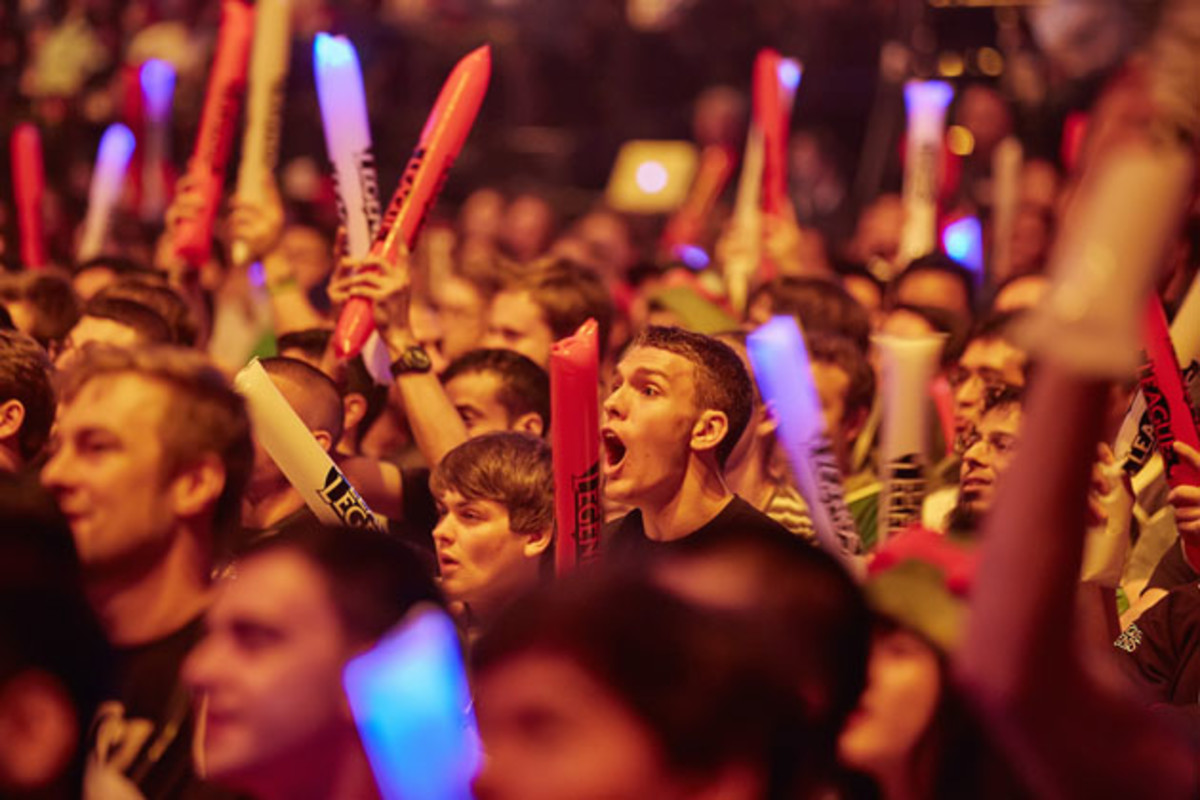
The nation’s fastest-growing sport isn't soccer or mixed martial arts. It's not rugby or lacrosse. It might not even be a sport at all.
Competitive video gaming, or e-sports, has exploded in the U.S. over the last five years as advances in technology have made the games better and the world smaller. Newzoo, a market research firm, estimates that 93 million Americans are active in sports, but more than twice as many—194 million—regularly play video games. That's 61% of the population. (If that seems high, consider that Candy Crush counts.) Gaming is a $22 billion-a-year industry, and it crosses boundaries: Plenty of enthusiasts have no interest in traditional sports, but Seahawks running back Marshawn Lynch plays Call of Duty daily (he's even a character in Call of Duty: Black Ops 3), and the Kansas City Royals spent more time last season playing Clash of Clans than watching film or taking extra BP. Just as many gamers are over age 50 as are under 18. Most of them play recreationally, but the kid you picked on in high school can now make upward of $1 million a year—in salary, prize money and sponsorship and advertising revenue—as a professional gamer.
So is competitive gaming a sport? There's head-to-head (if not always face-to-face) competition. There are teams and uniforms and pro leagues and those seven-figure salaries. Robert Morris University Illinois fields a varsity League of Legends team, complete with partial athletic scholarships. Foreign pros competing in the U.S. are issued P-1 "athlete" visas. Most players don't cut particularly impressive figures physically, but then again, neither do some relief pitchers.
The viewership is there: More fans (27 million worldwide) watched—online—the 2014 League of Legends world championship final between South Korea's Samsung Galaxy White team and China's Star Horn Royal Club than saw the clinching games of last year's World Series (23.5 million), NBA Finals (17.9 million) or Stanley Cup finals (six million). Twitch.tv, the streaming-video site that Amazon bought last year for $970 million and that is the home of most game feeds, has more video traffic than WWE.com, MLB.com and ESPN.com combined.
If you're surprised that video games are a spectator sport, you're not alone. But Riot Games, the company that makes League of Legends, secured L.A.'s Staples Center for its 2013 world championship final—the culmination of a 16-team monthlong tournament that is structured like soccer's World Cup—and sold out its 10,000 seats in less than an hour. The next year's world championship final would fill the 40,000-seat Seoul World Cup stadium.
The fan experience in person is not unlike the fan experience online: The same broadcasters who call the games for the streaming-video audience are piped into the arena; fans get a bird's-eye view of game action on jumbotrons that project the computer screen; and often fans are simultaneously on their phones checking their League of Legends fantasy teams. (Of course there are fantasy teams: both seasonlong ones—choose seven starters and three alternates—and daily lineups for a single day of competition.) The competitors themselves, seated in a long row across the stage, wearing headsets with two frequencies of white noise to block out the crowd and allow them to communicate, might just as well be in another room.
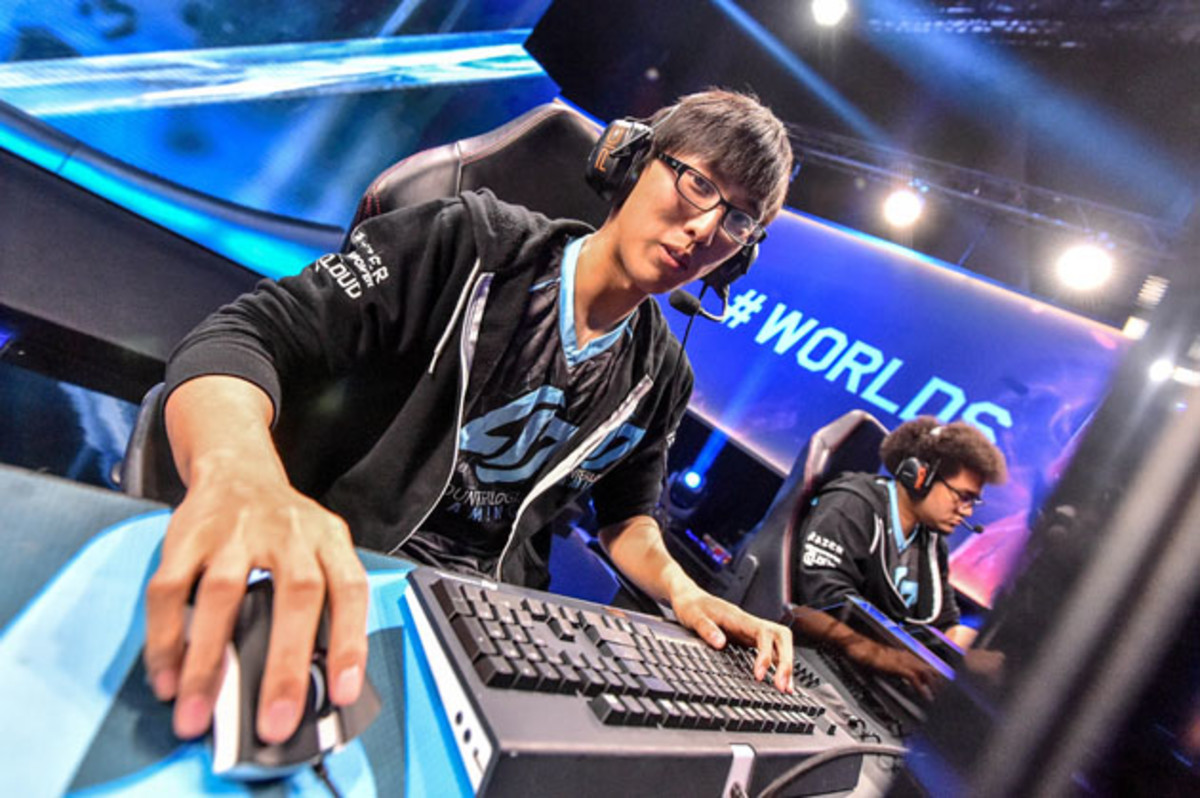
In League, teams of five players in distinct positions—top laner, jungler, mid laner, AD carry and support—compete in a sort of high-tech capture the flag, slaying dragons and destroying towers on their way to seizing their opponents' home base, or nexus. The key strategic choice in League of Legends comes before a game even starts, as players decide which characters, or champions, to compete as. There are currently 127 options, each with different abilities: A high-risk, high-reward champion (such as Jinx, who does immense damage from a long range but is immobile and dies easily, or Gragas, who favors body slams and has the ability to restore health but is an unpredictable alcoholic) might make more sense for the deft mid laner, who can more easily make game-changing plays; a support, who creates opportunities for teammates and helps to disrupt enemies, might select a champion who can absorb a lot of damage. Before every game each team excludes three champions it doesn't want to face, and then players alternate in choosing their characters. Games can be won or lost in this "pick-ban" phase, and professional teams employ analysts and scouts to focus on it.
Each player then directs his champion with his mouse and purchases and deploys weapons, such as the Hextech Gunblade and the Mercurial Scimitar, with his keyboard. (League is a computer game; unlike with an Xbox or PlayStation, there's no console.) The action moves quickly, and the camera angles jump around, so it can be difficult for the uninitiated to follow, but the champions have color-coded name tags above them on the screen to help spectators identify who's doing what. Bars on the left and right of the screen give each player's health rating and level of experience, and a box at the bottom lists statistics, including weapons stores, kills and the number of times the player has died in that game. Professional games average about 40 minutes as teams maneuver around the lanes (the three paths to the nexus) and jungles of Summoner's Rift, with about a 15-minute intermission between games.
The breaks at MSG include standard jumbotron fare—dance contests, trivia—but one in particular is missing. "It's hard to do the Kiss Cam," says Dustin Beck, Riot's head of e-sports, "when it's 90% male."
****
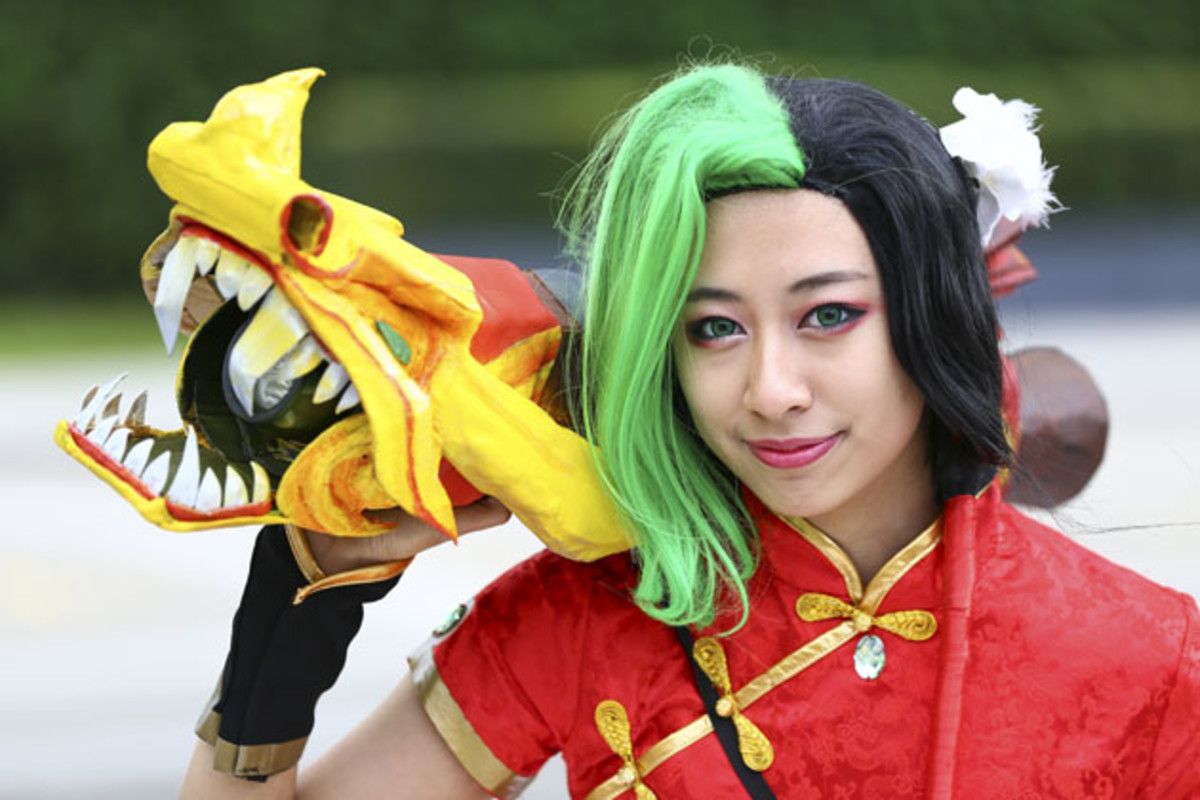
The appeal of competitive video games has been apparent since the Magnavox Odyssey was invented in 1972, but Guinness World Records recognizes Dennis (Thresh) Fong as the first professional gamer. In 1997, Thresh, then 19, won a Quake tournament for which one of the game's cocreators had offered his red Ferrari 328 as a prize.
Things have grown a bit from there. The five-man Evil Geniuses squad took home $6.6 million in August for winning the Dota 2 international championship in Seattle. Sixteen-year-old Sumail (Suma1L) Hassan's $1.3 million share made him the first teen e-sports millionaire.
Dota 2 tournaments have given out the most prize money so far—nearly $50 million to 1,248 players in 467 tournaments since 2011—but League of Legends is more popular, with 67 million users a month to Dota 2's 10 million. Ten professional League teams compete twice a week for nine weeks in the spring, then again in the summer, in the League of Legends Championship Series, the top-tier North American division; six more are in the next rung down, the Challenger Series, vying like European soccer teams to be promoted to the majors at the end of each split. (South Korea, China, Europe and Southeast Asia have similar organizations.) Riot operates the whole structure, although the teams themselves are owned by companies, including Samsung, and people, including hedge funders and former pro gamers. Most major North American teams, operating on a budget of $3 million to $5 million a year, make their money from sponsorships. The biggest sponsors are Geico, Red Bull and HTC, the Taiwanese smartphone and tablet manufacturer.
The games do not produce ACL tears and oblique strains, but many players have retired due to chronic wrist and hand pain. Teams work with physical therapists to combat slouching. The Germany-based Electronic Sports League, which holds tournaments for more than 50 games, including League of Legends, recently announced it would work with the World Anti-Doping Agency to implement drug testing after a Counter-Strike player admitted to having used Adderall during an ESL tournament.
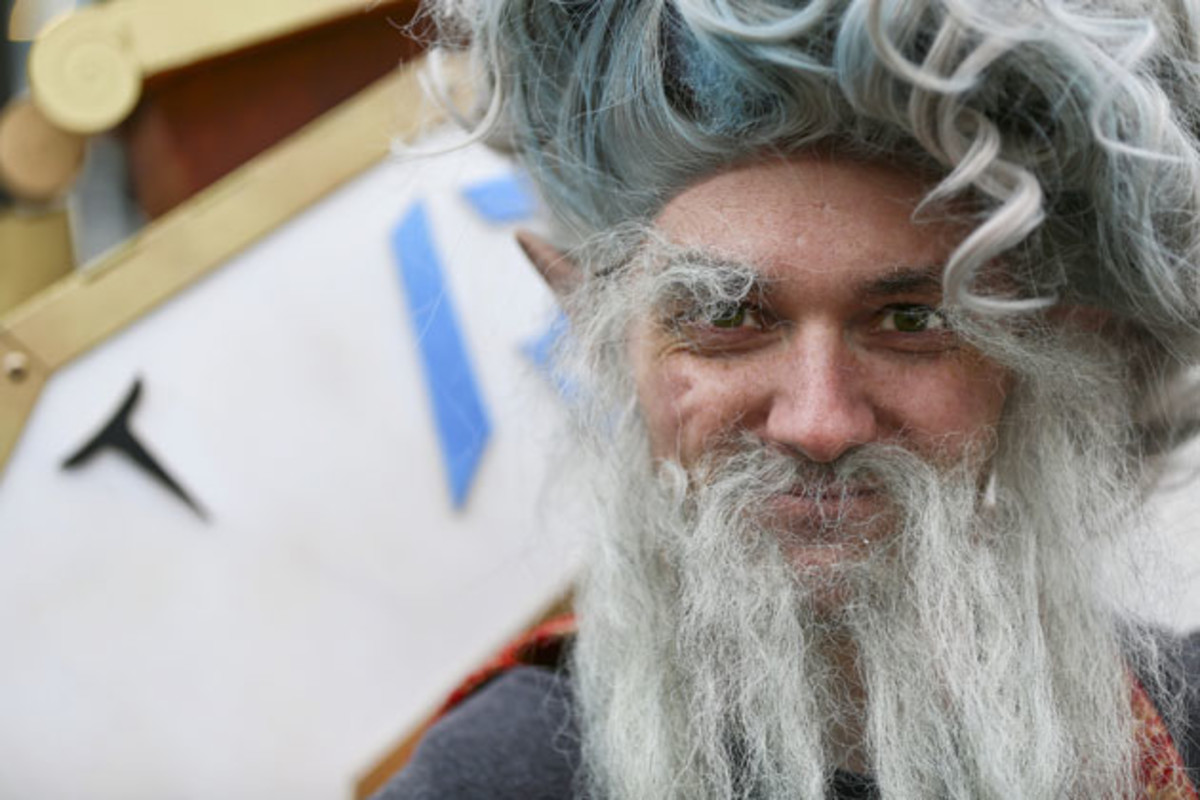
Among the difficulties in cracking down on potential drug use—and now match-fixing: 12 people were arrested in South Korea last month for their alleged involvement in throwing StarCraft II games—is the fractured nature of e-sports. There's no governing body to make rules, and many lower-level tournaments are played remotely over networks rather than in person, making it difficult to test competitors.
Because ping—the delay between the instant a player taps a key and the moment the game registers the action—can mean the difference between victory and defeat, location is critical at the elite level. The North American League servers were located in Portland until August, so most of the major pro players live on the West Coast, and all League Championship Series regular-season games have been played in person at Riot's 350-seat Los Angeles studio. (Riot moved the servers to Chicago to reduce the ping for the rest of the country.) Most of the elite talent, however, is in South Korea, where e-sports are a national pastime, though Americans dominate console games, such as Call of Duty, Halo and, not surprisingly, Madden. After the 1997 Asian financial crisis the South Korean government invested in broadband infrastructure, and gaming cafés began sprouting up. A huge community developed: There are two TV channels in South Korea devoted to e-sports, and in 2004, before many competitions moved to indoor arenas for improved acoustics, 100,000 fans attended the final of the StarCraft pro league on Gwangalli Beach in Busan.
But South Korea is on its own server, so if you want to practice against the best, you have to go there. Many of the teams competing at this month's world championships, held in four cities across Europe—London, Paris, Brussels and Berlin—spent September hunkered down in Seoul hotel conference rooms, playing against amateurs on the server in the mornings and scrimmaging against Korean pro teams at night.
The competitive gaming fan demographic, meanwhile, is a marketer's dream: upper-middle-class males, ages 18 to 34, with free time and disposable income. They're especially coveted because most of them are not watching other sports and are therefore largely untapped by advertisers. The players themselves are generally on the younger side of the spectrum: The oldest player on any of the four teams competing at MSG in August was 10 days past his 25th birthday. Women make up about 31% of fans, according to Newzoo. When Renegades won the Challenger Series playoffs last month to earn promotion to the majors, its support, Maria (Remilia) Creveling, became the first woman to reach the top North American level.
League of Legends was released in 2009, when its current expert practitioners were in middle and high school. It takes an enormous amount of time to get good at this game, and who has more time than a teenager? "You have to be a certain kind of person to be a pro League player," says Doublelift. "You just have to be really nerdy and not have a lot of social skills!"
****
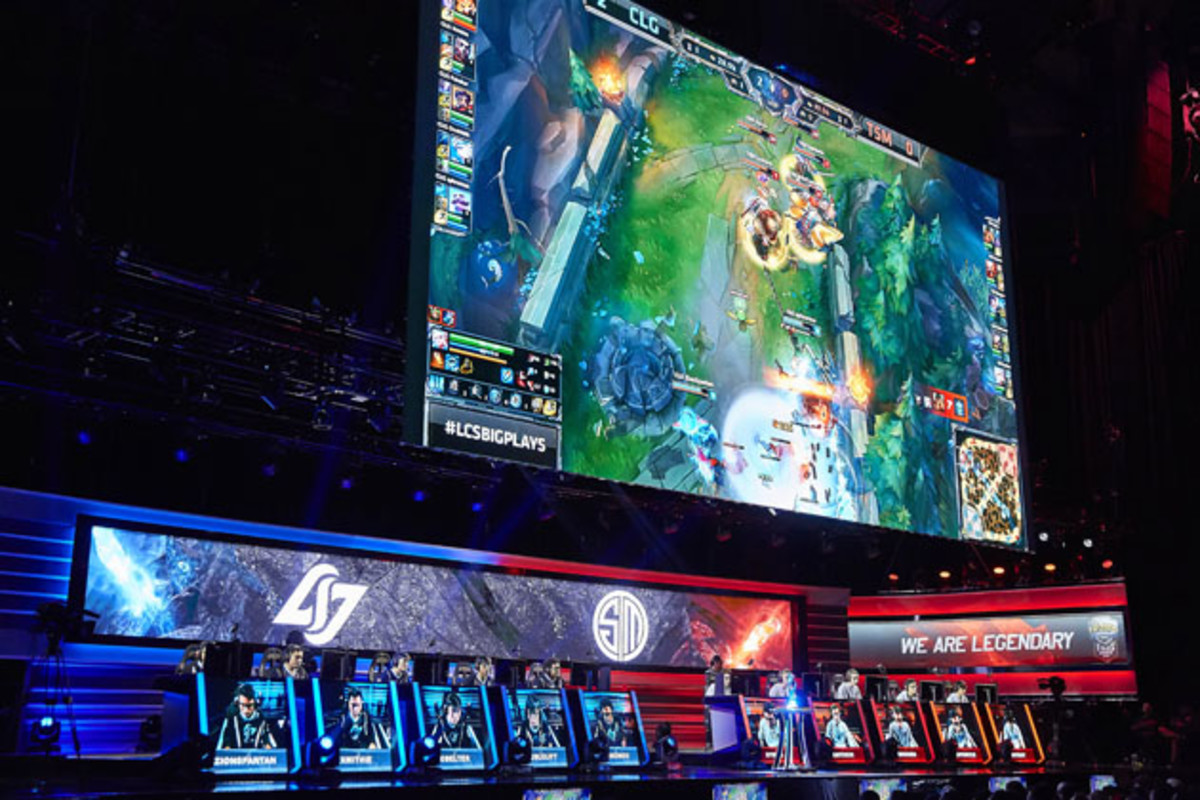
Madison Square Garden shakes as the CLG and TSM players are introduced on the loudspeaker by a Riot staffer doing his best Don LaFontaine. CLG wears soccer-style black jerseys underneath black cotton hoodies; TSM sports chambray shirts and black varsity jackets. As the players settle in, a trash-talk video plays on the giant screen:
"Regi's the type of guy that'll come kick your sand castle and take your sand," says CLG founder George (HotshotGG) Georgallidis of TSM founder Andy (Reginald) Dinh.
"Against CLG, my sodium levels kind of go out of control," says TSM top laner Marcus (Dyrus) Hill.
The rivalry between CLG and TSM goes deep—inasmuch as there can be deep rivalries in a sport that recently celebrated its sixth birthday. HotshotGG and Reginald butted heads as teammates on CLG in 2009, and Reginald created TSM in 2011 to take CLG down. CLG became the most popular team in North America, but a recent downturn in its play has caused fans to jump to the more consistent TSM. Whenever CLG has been primed for a run, it has found a creative and heartbreaking way to lose in the playoffs. CLG has never before been to a championship game; TSM has never missed one. Adding to the drama: TSM has already qualified for the 2015 world championships because of its regular-season performance. CLG can secure a berth with a victory over TSM.
In the first pick-ban phase, AD carry Doublelift and top laner Darshan (ZionSpartan) Upadhyaya swap champions, which isn't uncommon, but this particular switch draws gasps from the crowd: The champion ZionSpartan ends up with—Yasuo, who can create a wall of wind and whose attacks can turn into tornadoes—is almost never played by top laners. Unable to adapt, TSM goes down in Game 1.
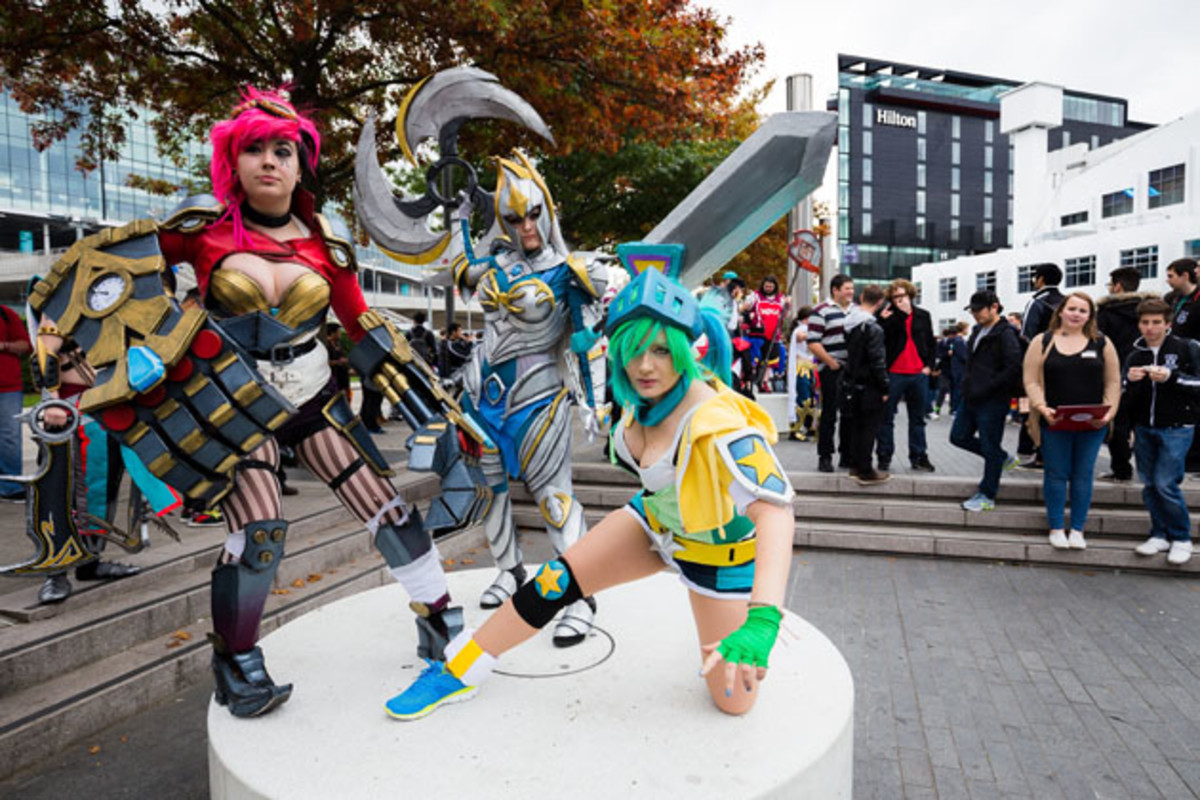
CLG and TSM swap sides of the map—and, more important, camera angles—between games. The teams seem fairly evenly matched until, in the 28th minute of Game 2, a battle breaks out. CLG looks to have gotten the worst of it, but with the team essentially on the business end of a five-on-three power play, Doublelift mows down the entire opposing side. The announcers don't even notice him until he's at three kills. Then:
"That pentakill came out of nowhere!" they roar, trying not to be drowned out by the crowd. "That might be the game!" It is.
Players can see only the locations of their teammates on the small position map in the corner of the screen, but spectators can see players from both sides, so the jumbotron is on a short delay to prevent cheering from giving anything away. "In early tournaments," Doublelift says, "you'd know if the other team was making a sneaky play. You'd hear the crowd and feel the bass, and your Spidey sense would tingle."
CLG needs no such help in Game 3. "They're gonna take the inhibitor!" the announcers shout. "They're gonna take the nexus! They're gonna take the trip to worlds!" It doesn't quite have the ring of "Havlicek stole the ball!" but the crowd, on its feet, doesn't seem to mind.
****
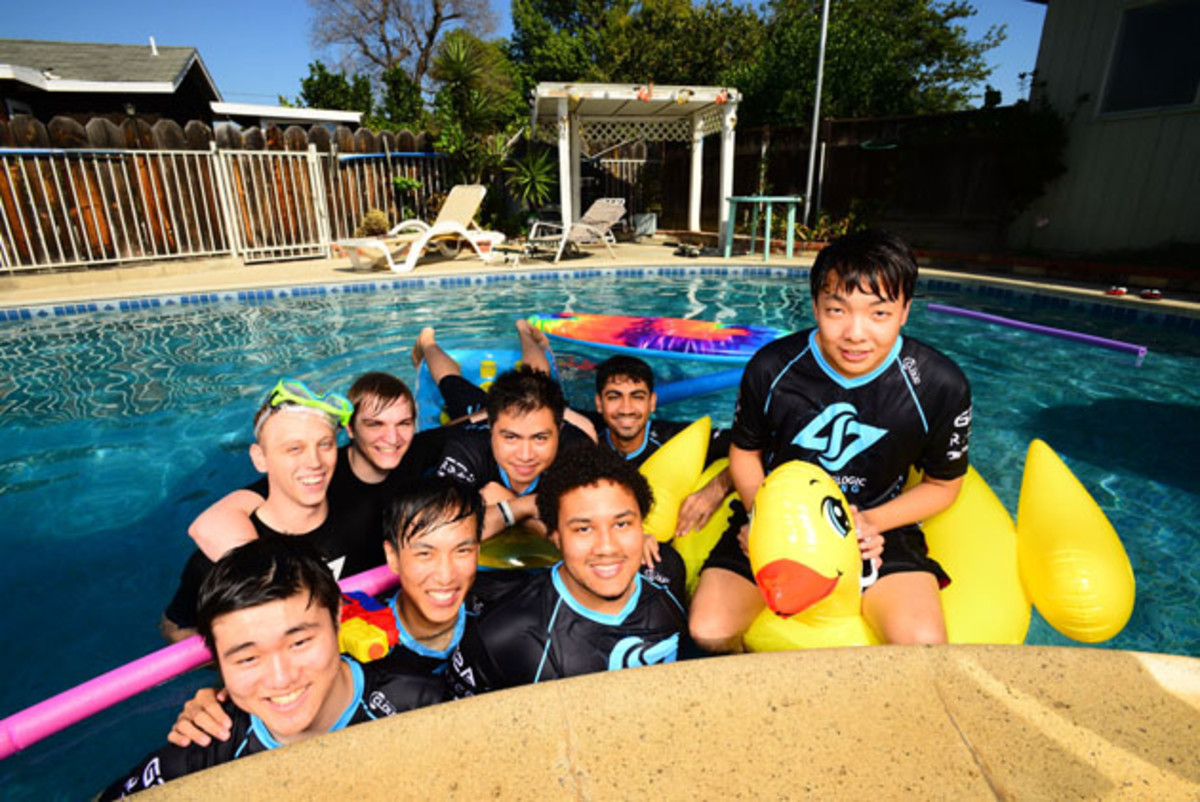
For CLG, one of the teams trying hardest to draw from centuries of traditional sports, the victory is a vindication. Nine months after being one game away from relegation, CLG took an unusual approach to finding a new coach. Ehrenreich, an education major at Clemson who minored in athletic leadership and helped football recruits adjust to life on campus, got practical training by setting up tackling dummies. He was a League player but had no experience coaching the game. CLG paired him with analyst Tony Gray, who would handle the pregame picks and bans and other strategy.
Ehrenreich, 28, has borrowed practice techniques from football. CLG sometimes pipes in crowd noise and flashes lights of different colors and brightness during scrimmages. Ehrenreich also tries to address the paradox of the successful League of Legends team: To become expert at the game, players must spend countless hours alone, playing online with computer-matched partners against computer-matched opponents, climbing the rankings and eschewing social contact. But as soon as they are good enough to be noticed by pro teams, they are asked to work with four virtual strangers as a unit. For most, it's their first experience on a team or under a coach.
So CLG's players spent most of the regular season carrying around a cinder block spray-painted with rivals' logos, to learn to share the burden. They swapped positions in a recent scrimmage (imagine Dwight Howard playing point), and they Skype once a week with a sports psychologist, who visited them to hold workshops in the lead-up to the North American championships.
Most professional teams set their players up in gaming houses so they can spend the maximum amount of time practicing. These places tend to resemble frat houses—box springs on the floors, kitchen cabinets labeled with names written on masking tape—but with seriously upgraded office equipment. Teams are sponsored by chair, keyboard and mouse manufacturers, and they match their monitors to the ones Riot provides in competition. CLG's house, 15 miles northeast of downtown L.A., is more of a compound, with three buildings, a pool and a basketball hoop the players have not been allowed to use since Doublelift got his left pinkie caught in the chain-metal net and required 12 stitches. They have a home gym that gets used more often than you'd imagine, although it's kept locked so no one can go in without a chaperone and get hurt.
CLG doesn't diverge much from most people's image of gamers; the team is a collection of mostly skinny kids in sweatpants and bare feet. Their conversation marries gamer jargon with standard twentysomething shibboleths. "I'm setting up the doublekill," says ZionSpartan during one session.
"That's my boy, D-Shan!" answers support Zaqueri (Aphromoo) Black. Doublelift and Aphromoo call themselves "the Rush Hour bot lane." Their positions are generally responsible for the bottom lane of the map; Doublelift is Jackie Chan, Aphromoo is Chris Tucker.
All five CLG players started gaming as children or young teens, then moved into League as they saw its potential. Their support systems varied from Doublelift's parents, who threw him out of the house, to Aphromoo's, who were encouraging even if his father once grounded him for two weeks for logging on to his dad's Diablo II account and losing some expensive in-game gear.
When Ehrenreich drags his crew onto the back porch for huddles, a few shift awkwardly and one leans against the railing with his eyes closed. But they light up once they're behind the monitors, surrounded by Michael Jordan and Michael Phelps posters as well as a few drawings of League champions by general manager slash team dad Matt (MaTTcom) Marikian, 31. Between games the players scroll through the team's Reddit fan page, watch cooking demonstrations on YouTube or update playlists on Soundcloud. Early on Ehrenreich had to break them of their occasional habit of communicating with each other through in-game chat rather than headset.
Days often start with a quarter- or half-mile run—cinder block sometimes in tow—and end with six to 10 hours of team practice, usually including scrimmages against other pro teams. In downtime players return to their roots in solo queue, competing on the open server as individuals and letting the computer match them with opponents. They can broadcast these practices on Twitch to make extra money from advertising to supplement their prize money and the $8,000 to $10,000 a month they earn in salary and sponsorships. Followers donate midstream, usually about $3 at a time, for the right to have their questions read aloud and answered on air.
All told, the most popular League players can pull in $400,000 a year, although only about 100 in the U.S. can support themselves fully through e-sports. Some become such personalities, offering tips and cracking jokes, that they leave competitive play to devote themselves full time to streaming. Fans flock to watch their heroes comment on their own matches; Twitch has 55 million users, who spend an average of an hour and 45 minutes a day on the service. Says Bryce Blum, an attorney who represents teams and players, "It's like if LeBron strapped on a GoPro to play pickup."
****
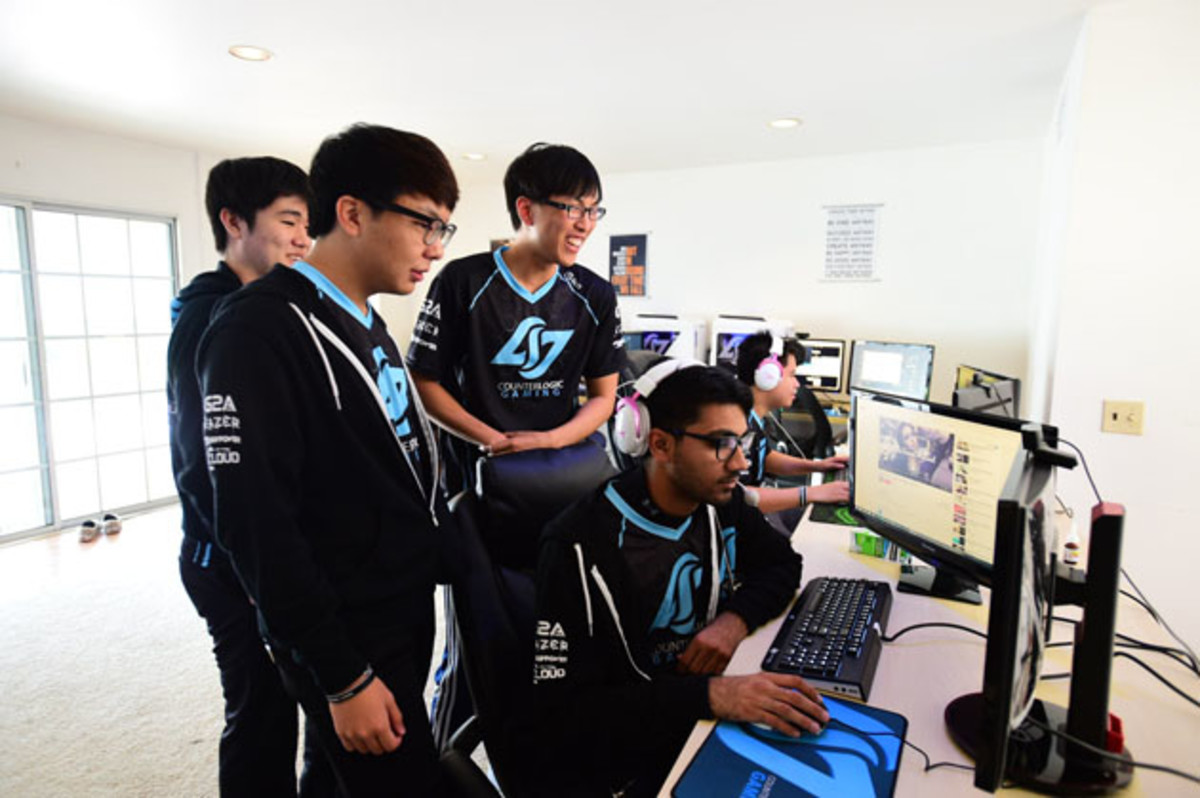
Minutes after walking offstage at Madison Square Garden, the members of CLG arrange themselves against a Riot-branded backdrop on the concourse for a fan meet. The line is more than a thousand deep, as is the one for TSM. For more than an hour the players pose for photos, accept gifts and even dole out hugs. Many of the fans are dressed as their favorite champions, and some sport team-logo temporary tattoos. Team owner HotshotGG is an attraction in his own right. "Oh, my God, you got him," whispers one awed teenager to another after HotshotGG hears him shout hello and comes over.
This doesn't happen only at e-sports events either. "When you walk into the stadium, you get mobbed," explains Aphromoo, "but even when I'm at Starbucks, I'll get noticed."
There are drawbacks to such fame. Many teams forbid their players to eat baked goods that people give them—you just never know—and TSM's star mid laner, Søren (Bjergsen) Bjerg, recently had to take out a restraining order against a stalker who flew over from Germany and stood outside the team house for hours, intercepting a food delivery and refusing to relinquish it unless Bjergsen came out. (The stalker was arrested and deported.)
But fan involvement is tremendously important to a sport that is growing so fast. Just as CLG prepared to leave for boot camp in South Korea, it received word that jungler Jake (Xmithie) Puchero, a Philippines native, had been denied a visa that would allow him to play in the world championships in Europe. The team posted on its website that it would promote alternate Choi (HuHi) Jae-Hyun, but a fan commented on Reddit that he had a connection in a Philippines e-sport organization. The team got in touch, and two weeks later it announced that the visa had come through and Xmithie would play after all.
****
Updated (and honest) NBA 2K16 player ratings
In the bowels of MSG, Doublelift and Aphromoo join a small group from ESPN, waiting to record a clip for that evening's SportsCenter. In April, seven months after ESPN president John Skipper said he was interested in airing only "real sports," ESPN2 broadcast a collegiate Heroes of the Storm tournament in prime time. The reactions on Twitter were predictable—"what has the world come to," "what the hell is this," "go outside, kids"—but the network has doubled down on its e-sports coverage. ESPN The Magazine dedicated its June issue to e-sports, and this year the network's X Games included a few e-sports tournaments.
On camera Doublelift and Aphromoo go a little beyond the typical platitudes ("All of us are no strangers to losing constantly—always failing at the most important times—and this time everything just came together"), but otherwise this looks a lot like every other post-big-win interview: goofy grins, uniforms a little sweaty, star player white-knuckling the trophy. The clip will air, and Doublelift will get hundreds of messages from fans and friends about it. But a month later he still hasn't watched it. He wouldn't know where to find it.
"I'd probably Google ESPN League of Legends?" he says. "I'm glad ESPN covered MSG, but I don't think it'll ever be truly mainstream like football or basketball. It's competitive, there's fans, there's passion and skill. I think trying to figure out if it's a sport or not is completely useless."
Neither CLG nor TSM will make it past the group stage of the 2015 world championships, but e-sports will be a big winner, drawing more than 10 million viewers on the first day—including Doublelift's mom, with whom he recently reconnected. "She doesn't understand it," Doublelift says, "but she knows it's important to me."
